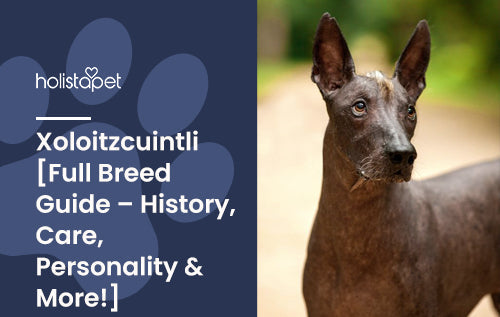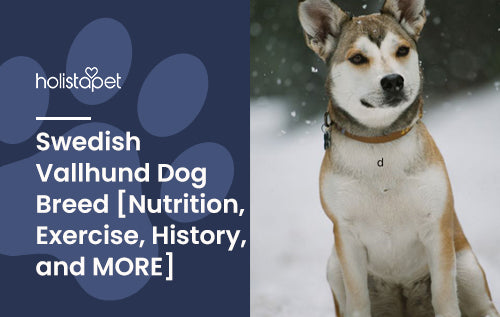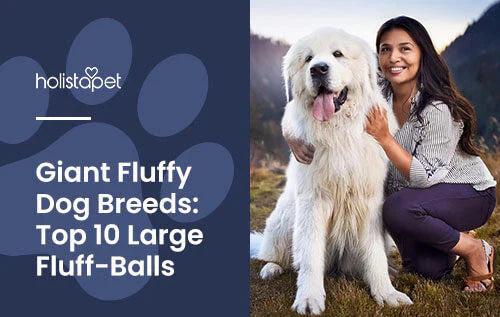You've finally decided to welcome a Xoloitzcuintli into your life. First thing's first: Pronounce it! Just say "show-low-eats-QUEENT-lee," and boom, you're a pro. But don't worry; most people call them Xolos because that's way easier.
Xolo dogs are ancient, rare, and have been around for thousands of years. These little legends are so iconic that they're the official national dog of Mexico! With their cool, sleek looks and big brains, Xoloitzcuintlis are bound to turn heads wherever they go!
Xoloitzcuintli Characteristics
Xolos are famous for their hairless, smooth skin. It's literally in their nickname, "Mexican Hairless Dog." But while the hairless variety steals the spotlight, there's also a coated version.
Coated Variety vs. Hairless Variety
About 1 in 5 Xolos have a short, smooth coat, while the rest rock that iconic hairless look. The whole hairless thing is just nature doing its thing. One popular theory says hairless Xolos were better equipped for Mexico's hot climate.
Hairlessness is a dominant trait, but you can find both hairless and coated Xolos in the same litter. And if you're lucky, you might spot a hairless one with a little tuft of coarse hair on their head, like a tiny mohawk!
Skin
The Xoloitzcuintli's skin is smooth and thick and feels like cattle hide. It's built to handle the rough and tumble of daily life. Running through bushes or roughhousing with other dogs might leave a few pale scratches, but those marks heal faster than you can say "Xolo."
Teeth
Hairless Xoloitzcuintlis often miss their premolars, those teeth between the canines and molars. This is why you might catch one with their tongue hanging out to the side. But they can eat just as happily and healthily as any other dog. Now, coated Xolos? They've got a full set of teeth; no worries there!
Eyes
Xolo dogs have gorgeous almond-shaped eyes that range from a soft yellow to a deep brown. And here's the cool part: The darker their eyes, the darker their skin. Another standout feature is their wrinkled brow. You'll catch that furrowed brow when they're paying close attention.
Body Heat
Xolos are naturally warm—over 100°F! This unique trait made them seem magical to indigenous people, who believed their warm bodies had healing powers. When someone was feeling under the weather, they'd cuddle up with a Xolo like a personal hot water bottle.

Xoloitzcuintli Dog Breed Size
The Xoloitzcuintli comes in three different sizes:
-
Standard Xolo. Ranges from 18-23 inches in height and weighs 30-55 pounds.
-
Miniature Xolo. Ranges from 14-18 inches in height and weighs 15-30 pounds.
-
Toy Xolo. Ranges from 10-14 inches in height and weighs 10-15 pounds.
Xoloitzcuintli Personality
Xolos are incredibly smart and observant. They're usually calm and don't bark much, but they're still excellent watchdogs. If something seems off, you'll hear about it. But don't expect them to get all tough because they're more about letting you handle it. If they start barking, go check things out yourself.
Xoloitzcuintlis are deeply devoted and love forming strong bonds with their owners. They're protective, but not in a confrontational way. They may be shy with strangers and prefer to observe first.
Some would describe Xoloitzcuintlis as "needy." They're social creatures who don't like being alone for long. If you're a homebody, a Xolo might just be your perfect match!
Xoloitzcuintli Dog Breed Exercise
A Xoloitzcuintli dog needs daily exercise, but nothing too intensive. A couple of 20- to 30-minute walks each day should do the trick. These pups have a natural hunter's instinct, so prepare for some serious squirrel-chasing action. A fenced yard gives them a safe space to run wild and burn off energy. Dog parks are also a solid option.
Xoloitzcuintli Training
Xoloitzcuintli puppies are full of energy, curiosity, and a bit of mischief. Prepare to put in some serious training time, especially in that first year. Warning: They're not the best fit for a busy household because they need attention and consistency.
Xolos need structure from the get-go, plus plenty of physical and mental stimulation. A bored Xoloitzcuintli can turn into a little destructive force. Thankfully, they're quick learners but also a bit headstrong.
Early socialization as a puppy with humans and other dogs is super important. The more they're exposed to different environments, sounds, and smells, the easier they adapt as they grow.

Xoloitzcuintli Dog Breed History
This ancient breed is one of the first to be domesticated by humans. Ceramic statues of these dogs have been discovered in Mayan and Aztec tombs, dating back over 3,500 years. In those days, they were seen as protectors. The Aztecs even named the breed after their god Xolotl, a dog-headed deity who guided souls to the afterlife.
After the Spanish conquest of the Aztec Empire, the Xoloitzcuintli nearly vanished. That's why, despite being around for millennia, the Xoloitzcuintli remains one of the lesser-known dog breeds in the world.
But the 1954 "Xolo Expedition" changed everything. Experts scoured Mexico's remote areas and found 10 purebred Xolos. Those dogs became the cornerstone of a revival program.
Xolos as Cultural Icons
The Xoloitzcuintli is a regular feature in Aztec sacred art and has deep ties to Mexican culture. The legendary Frida Kahlo even had one named "Señor Xolotl," who appeared in some of her most iconic works. Fast forward to today, and the Xolo is everywhere! It's even the proud mascot and logo of the Xoloitzcuintles de Caliente, Tijuana's premier football team.
Common Health Problems Found in the Xoloitzcuintli
The Xoloitzcuintli is a hardy breed thanks to its natural evolution. But just like any dog, they have a few health quirks to keep an eye on:
- Acne. Hairless Xolos might break out in blackheads as their skin matures. A medicated cream or shampoo may help soothe their skin.
- Joint Conditions. The Standard Xolo is more prone to joint issues, like elbow and hip dysplasia. Keeping your pup at a healthy weight can help prevent these problems from getting worse.
- Obesity. Xolos may overeat, which can lead to obesity and put extra strain on their joints, worsening issues like hip dysplasia. Always keep an eye on their diet and exercise.
- Sun Sensitivity. Hairless Xolos are vulnerable to sunburns. Slather on some dog-safe sunscreen before heading out in the sun for a while.
Fun fact: HolistaPet offers all-natural, vet-approved, and third-party lab-tested dog products that can help your Xolo feel and look their best. Try our soothing Skin, Coat, Nail Soft Chews to support healthier skin. And for any discomfort they may be feeling, we've got calming CBD treats, chews, oils, and capsules for a more relaxed pooch!

How to Care for a Xoloitzcuintli
Xolos are social butterflies. They're perfect for families that spend lots of time at home. They also need a little more effort than your average first dog. Having previous experience with active and social pups will help a lot. If you've got the skills to train them, they will be your most loyal and well-adjusted companion.
Stick to a consistent schedule for meals, exercise, and social time to keep your furry friend happy and well-behaved. And remember, crating for too long is a big no-no. Xolo puppies will find a way to make their own "fun," and trust us, it won't be pretty!
Nutrition and Feeding for a Xoloitzcuintli Dog
Feed your Xoloitzcuintli only high-quality dog food rich in protein and low in fat. Make sure it's grain-free and made with minimal ingredients. Also, check with your vet to see if your pet has any food allergies before changing their diet.
Because Xolos can be a bit extra when it comes to food, portion control is a must. Depending on their size, aim for anywhere between half a cup to one and three-quarters cups of food a day.
Instead of leaving food out all day, split it into two meals, and try to feed them at the same time each day. This will help keep them on track and in a healthy routine.
If you're eating, your Xolo's eyes are probably glued to your plate. Some human foods are okay as treats, but others are a hard pass.
Bad Foods for Dogs
Some food can be downright dangerous for our canine friends. Make sure to store these far away:
- Chocolate. Chocolate, especially dark chocolate, contains toxic substances that can affect dogs' metabolism. Even a little can cause vomiting and diarrhea, and in large amounts, it can be fatal.
- Garlic and Onions. These members of the Allium family, the same as leeks and chives, may cause anemia.
- Grapes. While most fruits are good for dogs, grapes are a serious exception, potentially causing kidney failure.
- Caffeine. Caffeine can cause their heart rate to rise or become irregular.
- Avocado. Avocados contain persin, which can cause vomiting, diarrhea, and breathing issues.
If you think your Xolo has eaten something toxic, immediately take them to the vet. You can also call the Pet Poison Helpline.
Good Foods for Dogs
Fruits and veggies can be a tasty and healthy occasional treat. Here are a few options:
- Fruits. Apples, berries, and melons contain vitamins, fiber, and antioxidants. Just remember, they're also high in sugar, so keep things in moderation.
- Vegetables. Broccoli, carrots, and green beans are full of nutrients. Celery is even great for fresher breath! Stick with fresh veggies, as canned ones often have too much added sodium.
- Cooked Eggs. Eggs are a protein-packed treat with essential vitamins and minerals. But skip the raw eggs; salmonella is not something you want your dog to deal with.
Coat Color and Grooming
The Xoloitzcuintli comes in the stunning colors listed below. Some may even have mottled spots of brown or pink, though some breeders may not prefer this.
-
Gray (most common)
-
Black
-
Tan
-
Brown
-
Bronze
One of the perks of owning a hairless breed is minimal grooming. After a fun day outdoors, just wipe down their skin with a damp cloth to remove dead skin and pollen.
Xolos with coats only need light grooming. Brushing once a week is enough to keep their short hair looking good. Like all dogs, regular nail trims and teeth cleanings are important.
Bathing
You can bathe your Xolo dog once a week or as rarely as once a month. Don't go overboard because too many baths can strip away their skin's natural oils. You want your pup glowing, not dry.
Not sure if it's time for a bath? Give your pet's skin a feel and sniff. If it's oily or smells a bit... musty, then yep, it's bath time.

Children and Other Pets
Xoloitzcuintlis are affectionate, loyal, and totally bonded to their people. But when it comes to strangers, don't expect them to roll out the red carpet. If you want your pooch to warm up to new faces easily, early socialization is the answer.
They're not fans of rough handling, so they're not the best choice for homes with toddlers who might yank on their ears or tails. Gentle handling is the name of the game.
Xolos can get along just fine with cats and other dogs, but do your homework to make sure the mix works. If you want your Xolo to be a social butterfly, regular dog park visits and daily walks can help.
Xoloitzcuintli Dog Rescue Groups
While these rare pups are mostly found through breeders, there are a couple of amazing rescue groups giving them a second shot at a happy life:
-
Xoloitzcuintli Primitive Breed Rescue – www.xolopbr.com
-
Bald Is Beautiful Hairless and Small Breed Rescue – www.baldisbeautifuldogrescue.org
Xoloitzcuintli Dog Breed Organizations
Joining a breed club is a great way to connect with fellow Xolo dog enthusiasts. The Xoloitzcuintli Club of America (XCA) is the official Xolo organization in the United States, as recognized by the American Kennel Club (AKC).
The XCA hosts dog shows across the U.S. and has an honor roll of past and present champions. It's also a great spot for finding a reputable breeder. Check out their website at www.xoloitzcuintliclubofamerica.org to find out more about upcoming events or breeders near you.

More About the Xoloitzcuintli
Thinking about bringing a Xolo into your life? There are a few things you should consider, especially since this rare breed comes with some unique perks and needs.
Cost
Xolos are one of the rarest breeds out there, with only about 30,000 in the world, most of them in Mexico. Because of their scarcity, expect to pay anywhere from $2,000 to $4,000 for a Xoloitzcuintli puppy. Fortunately, because they're such a healthy breed, they do not cost much to maintain long-term.
A Good Dog for Allergy Sufferers
Hairless dogs are hypoallergenic. If you or one of your family members are allergic to dog hair, the Xolo could be the ideal pet for you.
But hold up! Saliva and skin cells can also trigger reactions. The good news? Xolos tend to drool very little, and regularly wiping them off with a damp cloth should keep them from leaving dead skin cells around the house.
If you're allergic to dogs, though, it's a good idea to spend some time with a Xolo first before adopting. Better safe than sneezy!
Final Thoughts
The Xoloitzcuintli is a stunning blend of ancient history, unique looks, and loyal companionship. Owning one means you'll turn heads and spark conversations everywhere you go. And yes, you'll probably get asked a million times how to pronounce their name. But with a Xolo by your side, you'll have a furry friend that's as special as they come.







![Probiotics For Dogs [Soft Chews] - HolistaPet](http://www.holistapet.com/cdn/shop/files/Probiotic-Infographic-1_472d7a29-e30c-435a-9638-1365d8c3a9f9.jpg?v=1725384841&width=104)



























Leave a comment
All comments are moderated before being published.
This site is protected by hCaptcha and the hCaptcha Privacy Policy and Terms of Service apply.